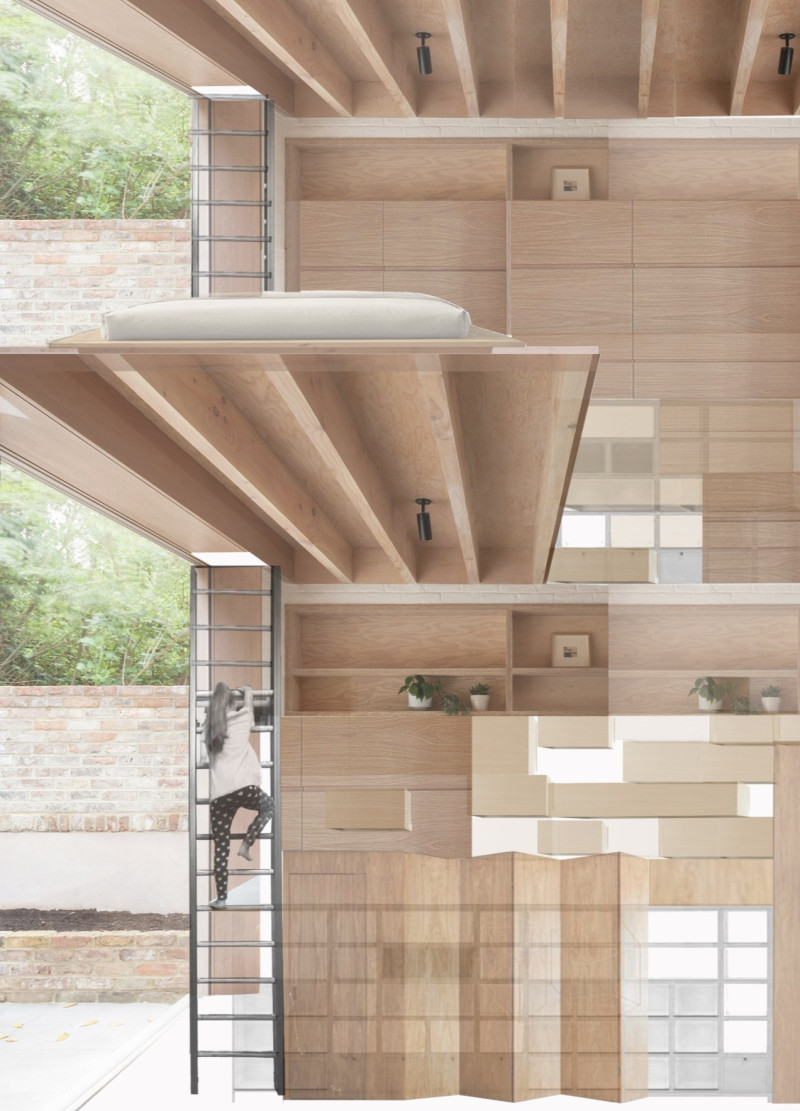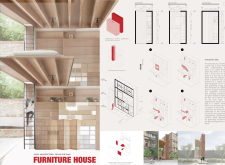5 key facts about this project
The Furniture House, located in Concepción, Chile, provides a thoughtful response to the limitations of urban living. Set within a narrow three-meter-wide lot, the design focuses on maximizing space while offering a functional and adaptable home. The concept revolves around integrating furniture as a central element of the architectural layout, changing the typical way residential areas are designed and used.
Conceptual Framework
The design adopts principles of infill architecture to blend with the existing urban environment. By considering furniture not just as items but as vital components of the space, the layout allows for flexibility and ease of use. This approach reshapes traditional ideas of residential architecture, where furniture plays a key role in enhancing everyday life within the home.
Spatial Organization
The layout efficiently organizes living areas over two floors. A well-planned vertical connection links the ground floor with the upper level, promoting easy movement throughout the house. Various programs find their place within a designated programmatic wall, which creates an orderly living space that can accommodate multiple functionalities, reflecting the diverse needs of its inhabitants.
Dynamic Adaptability
The furniture system in the house is designed to be dynamic and removable. This feature lets residents adjust their living spaces to fit their personal requirements. Such adaptability is crucial in making the most of the limited area available. The flexibility in layout allows for a responsive environment, catering to the changing lifestyles of those who reside there.
Strategic Coupling of Spaces
Programmatic volumes work together with circulation pathways, showcasing a thoughtful integration of functions. This connection enhances the overall experience and ensures that movement through the house feels logical. Every square meter of space in the compact design is utilized effectively, highlighting the seamless relationship between living areas and circulation routes.
The careful fusion of adaptable furnishings results in a space that evolves with its occupants. Each area can transform, reflecting the daily lives and preferences of those living within the Furniture House.























